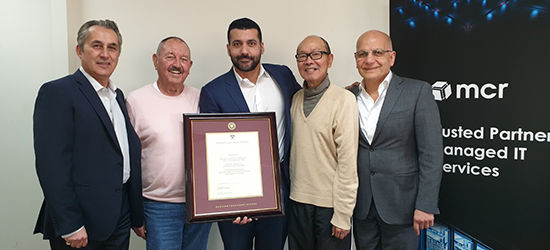7 tips for finding the right talent for your business
I recently completed an executive degree at Harvard Business School and one of my favourite questions to ask my classmates — fellow leaders and managers in their respective fields — was “how do you know who to hire?”
Whether you’re a Fortune 500 company or a small startup, it is people that present the greatest challenge to the success of your business.
Employees are the most important asset in your company. It is not only crucial to hire the right talent but also to develop a strategy to retain them over the long-term.
Unfortunately, this is easier said than done.
That is why, in this week’s post, I would like to share my 7 key takeaways on hiring well, gathered from my own personal experience as well as from the mouths of managers and CEOs from all around the world.
Of all of those 180 unique and completely separate businesses, each with their own industry, style and model, the one thing that united us was one particular challenge: people.
From Europe and the UK, to America, Canada, New Zealand and Australia, the main difficulty that everyone raised over and over again was people – or more specifically, internal staff.

Sid Kolahdouzan (CFO)
mcrIT 10+ years
It comes down to strategy
No matter what industry or size your business is, it’s important to establish a good HR strategy around the hiring process before you start looking for new talent.
What I mean by this is that you formally create priorities, processes, rules and goals that stipulate why, how and who you wish to hire in accordance with your business’ objectives.
By doing this beforehand, you create a sense of consistency and accuracy around how you bring a potential new team member on board – as opposed to it being performed in an ad-hoc manner.
Why is a good hiring strategy important?
One of the things that was consistent and apparent amongst most of the great leaders I have met is that they have an instinctive ability to pick and surround themselves with good people.
Unfortunately, this instinct is not scalable and very difficult to transfer.
When you’ve taken the time to set up a good HR strategy, you and your team can all adhere to a well-thought-out process that attracts the best talent into your team who will contribute to your business’ overall success.
This HR strategy can involve the following:
(1) Recruitment tools
While there is always a sense of intuition and judgement regarding selecting the right candidate, there’s only so much you can learn about someone in a few interviews.
So, you may wish to use some of the recruitment tools out there to support your hiring process by adding more rigidity and data.
For example, there are personality tests that allow you to identify people’s drives and see if they are consistent with your business’ needs. At mcrIT, we use the Myers Briggs 16 Personality Types and find they help us bring about good hiring outcomes.
However, there are many more options available.
Research a few of these to see which may help improve your recruitment process.

Mohammad Ajili (TAM)
mcrIT 10+ years
(2) All aspects must be considered
When you’re hiring, it’s important to remember that a person offers more than just work experience. You’re also looking at their character, skillset and personal motivations too.
Selecting a person solely on one of these aspects alone may not be the best fit which is why I encourage my team to look at the whole spectrum to select the right candidate.
(3) Have a good management team
Recruitment really is a team effort, especially when it comes to bringing on new members. I’ve found that having a good Management and Executive team who contribute their expertise and advice really makes a tremendous difference.

Yvonne Yang (Sales Admin)
mcrIT 10+ years
(4) Understand your culture
We all talk about “strong business culture”, but do you actually know what culture your organisation has? It’s very hard to recruit someone to match your culture if you don’t understand it in the first place.
So, take the time to review your Vision and Mission statements, as well as your core goals to see what your culture is actually built upon. Only then can you explain what’s on offer to candidates and manage their expectations.
(5) Reference checks
While reference checks are nothing new, the approach to undertaking them is often done poorly.
No one puts down a bad reference on their resume, so if it’s just a general chat with the person, you’re not going to get enough of a useful insight.
Instead, train your team to conduct reference checks with very open-ended questions, such as: “tell me about a project you both worked on together and the roles you both played. How did he/she contribute value?”
When you get more of a story, you can then make educated deductions, rather than hear a glowing spiel every time.

Sam Capello (Delivery Mgr)
mcrIT 10+ years
(6) Empower your team
Once you’ve established a solid HR hiring process, it’s important to train your team and empower them to be able to undertake it too.
You can’t be everywhere, doing everything. So, it’s important to encourage staff to be able to hire without your direct involvement and know they are well-supported and trusted in doing so.
(7) Most important of them all: take the time
One of the most overlooked factors of the HR strategy is the investment of sufficient time.
Hiring the wrong person is extremely expensive. It can cost a lot of resources, extra time, and damage to both the culture and the performance of your team in the meantime.
We’ve all been there! And we need to learn from this.
Spend the time upfront to be thorough and get this right, as it will cost you a lot more after. It’s worth the trade-off.
What are your thoughts?
I’d welcome comments and opinions on how you conduct your recruitment process and strategies you’ve tried that have succeeded.
Thanks for reading.

Maria Levesque (EAM)
mcrIT 10+ years







Leave A Comment